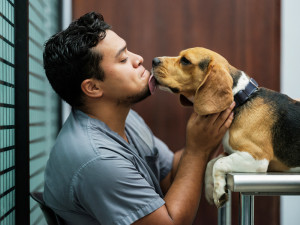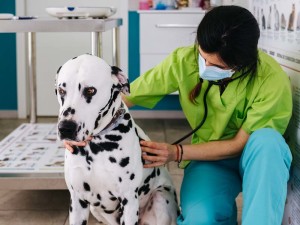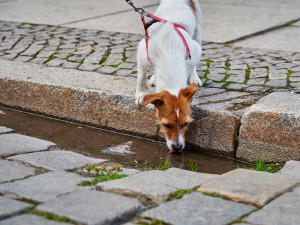What Is Alabama Rot? How to Spot The Potentially Fatal Disease
This dangerous disease has been spotted a number of times in the UK. Here’s how to recognise if your dog has symptoms
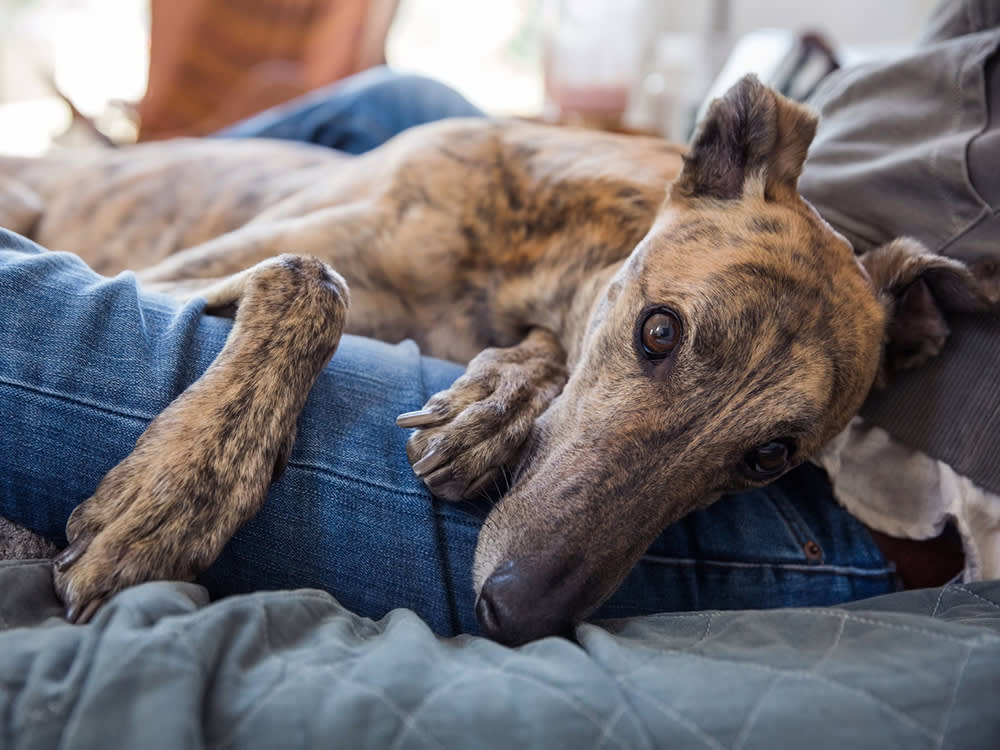
Share Article
We never want our dogs to get sick, having a poorly pup is always distressing. The best thing we can do as pet parents then, is to educate ourselves on the illnesses that affect dogs, learn how to spot them, and treat them if they do occur.
One little-known disease is Alabama Rotopens in new tab. Despite it‘s name, Alabama Rot is actually a condition currently affecting dogs in the UK. Thankfully, it is rare, but it is extremely serious and can lead to kidney failure and death.
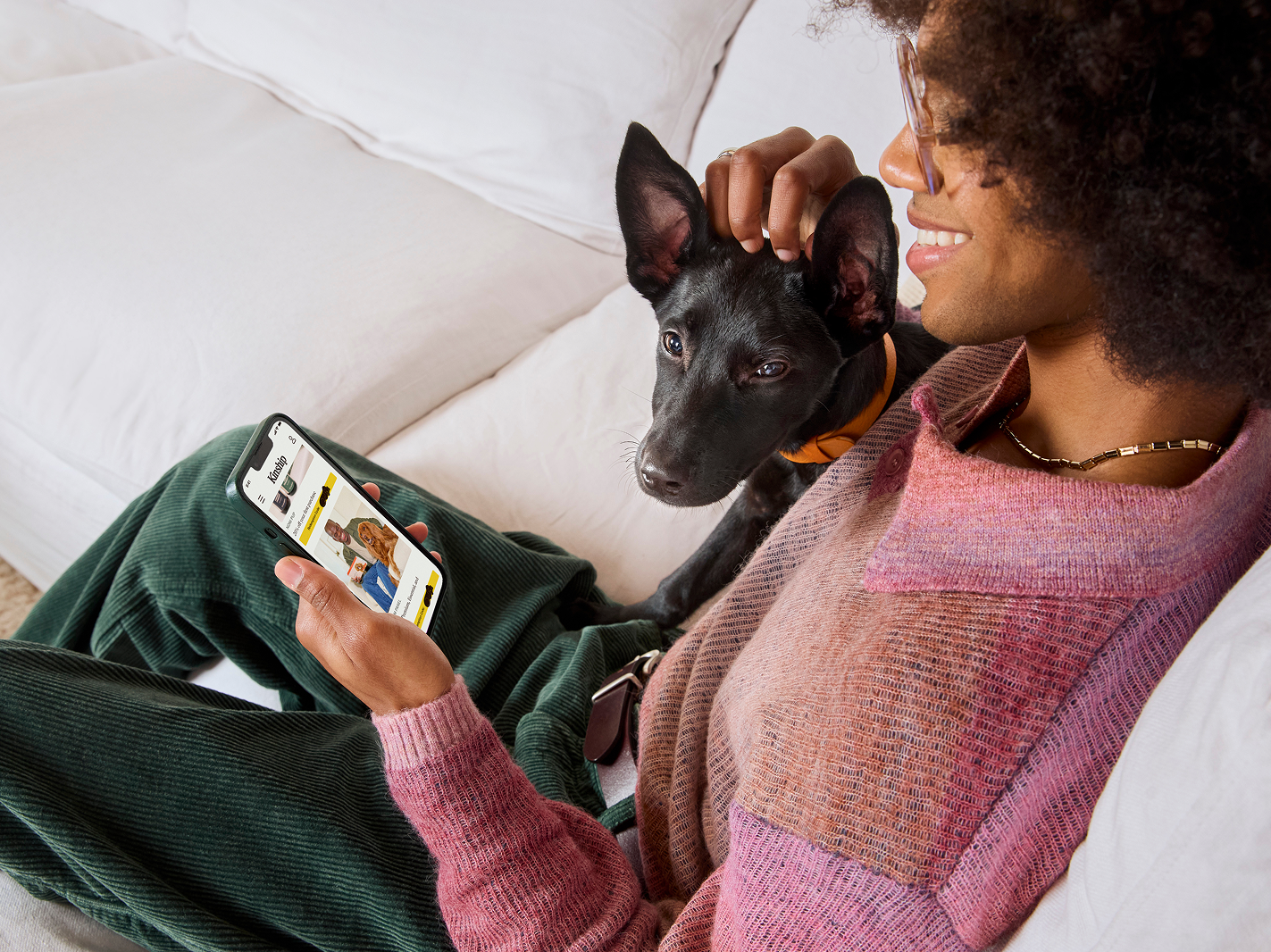
Get (totally free) deals for food, treats, accessories, tech and way more pet parenting must-haves.
Read on to find out about the symptoms, causes and treatment of Alabama Rot.
Main takeaways
Alabama Rot is a disease that causes blood clots to formopens in new tab in small blood vessels leading to damage to the skin and kidneys.
Since 2012, 326 cases of Alabama Rotopens in new tab have been detected in the UK. Experts suspect the real number is much higher.
Some dogs will develop skin issues and recover without intervention. Some will go on to develop kidney failureopens in new tab. If the disease gets to this stage, it is often fatal.
Little is known about what causes of Alabama Rot which means treatment is difficult. It has been linked to walking in muddy, woodland areasopens in new tab, especially around Manchester and the New Forest.
What is Alabama Rot?
Alabama Rot is a potentially fatal disease that has been affecting dogs across the UK since 2012. It gained its name after a number of Greyhounds developed the disease at an Alabama dog racing park in the 1980s. It is also known as ‘cutaneous and renal glomerular vasculopathy’, which is quite the mouthful, so is commonly shortened to CRGV. ‘Cutaneous’ refers to the skin, ‘renal’ and ‘glomerular’ to the kidneys, and ‘vasculopathy’ to the blood vessels. Alabama Rot causes tiny clots to form in the smallest blood vessels in your dog’s body causing injury to the skin and kidneys.
In the US, there haven’t been any reported cases since the original outbreak in the 1980s.
What causes Alabama Rot?
A bacterium believed to be causing CRGVopens in new tab has been isolated by researchers but not yet identified. Research is actively being undertaken to understand more about this condition. The disease has been linked to walking in muddy, woodland areas with a large proportion of cases occurring in the New Forest and Manchester areas. However, cases have been reported across the UK. The disease usually occurs in winter and spring. It is not yet known how the disease arrived in the UK or whether the bacteria exists in the environment.
What are the symptoms of Alabama Rot?
Dogs typically develop ulcers on their feet or lower legsopens in new tab. These ulcers can vary in size, number and severity. Some appear as mild reddening of the skin, whilst others resemble small cuts. If your dog has long hair or you haven’t noticed the sore, then you may see them licking their feet excessively. In a few cases the ulcers can be large and cause severe swelling of the affected leg.
Whilst most sores appear on the feet, some dogs will develop ulcers on the face, belly or even in their mouth. These ulcers can easily be mistaken for a cut or sting, however they appear suddenly without an injury to cause them. For most dogs, skin ulcers are the only symptom and they tend to recover well. Unfortunately, others will go on to develop kidney failure, also known as acute kidney injury. If this happens, your pet will be very quiet, they may not want to eat and will often drool or vomit. They will drink excessively, in some cases without urinating. These symptoms can develop at the same time as the ulcers or some days later. Unfortunately, many of the dogs that go on to develop kidney disease do not survive. Why some dogs go on to develop a more severe version of the disease is currently unknown.
What to do if your dog is showing symptoms of Alabama Rot
Contact your vet straight awayopens in new tab. For dogs that go on to develop kidney failure, early identification and early treatment is the best chance they have of surviving.
How common is Alabama Rot?
Undeniably, CRGV has the potential to be a very serious disease, affecting all breeds of dog without discriminating between age or gender. Much of the concern surrounding CRGV comes from the fact that we know very little about it. We don’t know why dogs become affected or which dogs will go on to develop life threatening disease. For this reason it is hard to advise how we can best protect our dogs.
Diagnosing Alabama Rot
Diagnosis is usually only confirmed at post mortem due to the lack of a safe diagnostic test. This means that any confirmed cases have usually died, which makes estimating the true number of cases very difficult. Between 2012 and December 2024, 326 cases of CRGV were confirmed across the UK, an average of 27 per year. In reality, the number of undiagnosed cases is likely much higher. Despite this, CRGV remains a very rare disease and it is likely that many dogs only experience small skin sores and recover without treatment.
Is there an Alabama Rot map?
Anderson Moores, the veterinary specialists leading the research into CRGV, have a live mapopens in new tab of confirmed cases on their website.
Treatment and management of Alabama Rot
Dogs that have skin sores in the absence of kidney involvement tend to recover well, although sores can take months to heal. Your vet may prescribe pain relief and antibiotics and might also apply a dressing to the affected area.
Sadly, dogs that develop kidney failure often don’t survive. To have the best chance of recovering they require early and aggressive treatment. They will need intensive care and, due to the rare and challenging nature of the condition, your vet may recommend referral to a specialistopens in new tab.
How to prevent Alabama Rot
Unfortunately, as the cause of Alabama Rot is not known, reliable advice on prevention is lacking. There is currently no evidence suggesting that it is passed from dog to dog, and as far as we know it is not contagious. It is recommended to wash your dog following muddy walks, especially their lower legs, as this will allow early detection of any suspicious sores, enabling treatment to be started sooner. Vigilance and awareness is key so check your dogs regularly and make sure other dog walkers have heard of the condition.
Alabama Rot is most prevalent between November and May and has been linked to walking in woodland following rainfall. Check your dog’s legs for sores after long, muddy, woodland walks. Remember most cuts are nothing to worry about and CRGV is a very rare condition. Chances are, its nothing to worry about, however if you do find a sore that has appeared without injury then speak to your vet about it. If symptoms such as vomiting and lethargy develop around the same time then this could indicate a problem with the kidneys, in which case prompt veterinary treatment should be sought. Kidney involvement is often fatal and early treatment may lead to a better outcome.
Frequently asked questions about Alabama Rot in dogs
What are the first symptoms of Alabama Rot in dogs?
Dogs with Alabama Rot typically develop ulcers on their feet or lower legs. Some will appear as a mild reddening of the skin, others might look like small cuts. They can vary in number, size and severity. Some dogs may develop ulcers on the face, belly or even tongue. These ulcers can be mistaken for a cut or a sting, however they will appear suddenly and without any apparent cause.
How do you treat Alabama Rot in dogs?
Because little is known about Alabama Rot, an effective treatment has yet to be developed. If the dog's condition remains on the skin and doesn't affect the kidneys, the sores will heal by themselves, although it may take months. Vets may dress the wound and prescribe pain relief and antibiotics to help.
If the disease extends to the kidneys, early and aggressive treatmentopens in new tab is needed and your vet may refer you to a specialist.
Where do dogs pick up Alabama Rot?
It is not known what causes Alabama Rot so exactly where dogs get Alabama Rot from has not been confirmed. However, there have been links made to walking your dog in a wooded, muddy area. A large proportion of the cases have been around Manchester and the New Forest.
Do dogs lick Alabama Rot?
Dogs lick injuries or sores on their skin and dogs suffering from Alabama Rot will likely develop ulcers or sores on their legs and feet. For dogs with long hair that covers their skin, your dog licking themselves excessively might even be your first sign that an ulcer has appeared.
References
“CRGV: Information & Questionsopens in new tab.” Alabama Rot, Anderson Moores, 11 June 2024
“Alabama Rotopens in new tab.” Vets4Pets, Vets4Pets, 3 June 2019
Skulberg, Ragnhild, et al. “Description of the Use of Plasma Exchange in Dogs with Cutaneous and Renal Glomerular Vasculopathyopens in new tab.” Frontiers, Frontiers, 26 June 2018
Ministry of Defence. “Alabama Rot.opens in new tab” GOV.UK, GOV.UK, 18 June 2024
“Cutaneous and Renal Glomerular Vasculopathyopens in new tab a.k.a. ‘alabama Rot’ in the UK – Frequently Asked Questions.” RVC, 4 Apr. 2024,
“About the Disease - FAQ.opens in new tab” Stop Alabama Rot. Accessed 16 Dec. 2024

Dr Nina Blackmore, MRCVS, BVSc, PgCertSAECC
Nina Blackmore is a vet who, after leaving the Royal Army Veterinary Corps, took up two very different lives. For four long, chaotic days each fortnight she lives in a tiny house next to a small animal veterinary hospital in Boston, managing hospitalised patients and treating any emergency cases that turn up. As well as emergencies she also has a keen interest in pain management and acupuncture. The rest of her time is spent in a quirky bungalow in Rutland where she and her husband run a self sufficient small holding and a dog home boarding business. She spends her life surrounded by animals and has made it her life goal to help as many as possible.
Related articles
![Dalmatian and Great Dane mixed dog at the vet being checked on by a nurse in bright green scrubs]()
Beware of Bloat in Dogs
Consider it the mother of all dog emergencies – if your dog has it, take them to the vet ASAP. Learn how to spot the condition and how it’s treated
![]()
Scared Stiff: How to Spot Tetanus in Dogs
Dogs can get tetanus, too – and not just from rusty nails
![Fluffy brown and white puppy dog scratching a lot with its paw]()
Your Itchy Dog Deserves Relief – Here’s What to Do
How you can help them feel better – fast
![Dog drinking water from a puddle in the road]()
Giardia In Dogs: Signs, Symptoms and Treatment of This Summer Parasite
If your dog drinks from puddles or splashes around in streams, read this
![Bearded Collie running in a lake]()
When Drinking Too Much Water Is Deadly
How to keep your swimming dog safe
